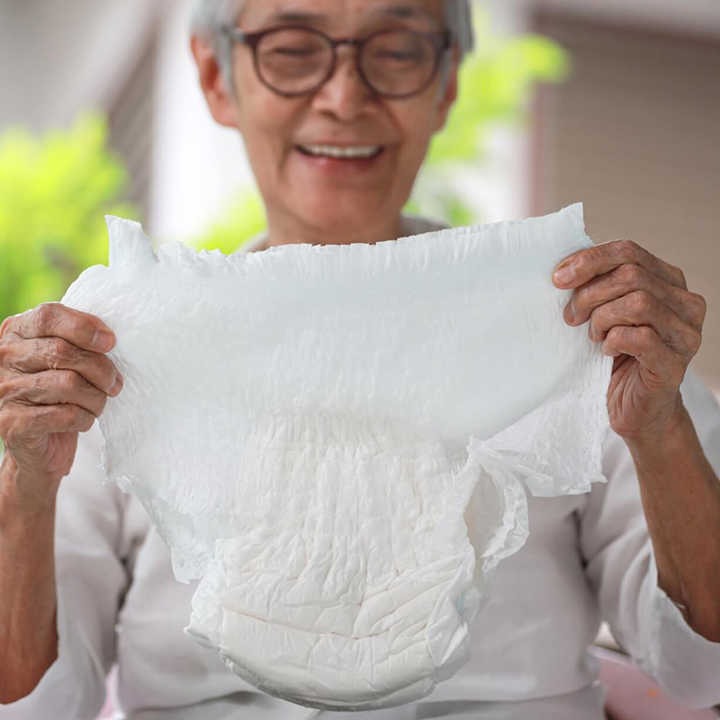Diapers are a necessity for parents and caregivers around the world, but their environmental impact raises significant concerns. One critical question that many people ask is: how many years does it take for a diaper to decompose? The answer to this question is complex, as it involves various factors, including the type of diaper, the conditions of disposal, and the environmental context. In this article, we will explore the decomposition timeline of diapers, the factors that affect it, and the implications for waste management.
Overview of Disposable Diaper Decomposition
Understanding how long it takes for diaper to decompose is crucial. These common baby products pose serious environmental challenges. It is estimated that disposable diapers take about 500 years to break down. This slow decomposition rate contributes significantly to landfill growth.
The Environmental Impact of Disposable Diapers
Disposable diapers make up a large volume of landfill waste. Annually, billions of disposable diapers contribute to this issue. They contain plastics that do not break down easily. This results in harmful chemicals leaching into the soil and water. This pollution harms wildlife and disrupts natural habitats. The environmental footprint of disposable diapers is thus quite large, affecting us all.
The Concerns of Chemicals in Disposable Diapers

Disposable diapers involve several chemicals during their production. These substances can pose risks to both health and the environment.
Health and Environmental Risks of Diaper Components
Diapers often contain chemicals like dioxins, fragrances, and phthalates. These substances can harm the environment and human health. Dioxins are particularly concerning due to their cancer-causing properties. Fragrances in diapers can lead to skin irritations and allergic reactions on sensitive baby skin. Phthalates, used to make diapers soft and flexible, can disrupt hormonal balances. Many of these chemicals do not easily break down, adding to environmental pollution. Choosing diapers that are free from these harmful chemicals can protect your baby’s health and the planet.
Biodegradable Diapers: Are They A Viable Option?
As we explore eco-friendly diapering, biodegradable diapers often come up. They promise to decompose faster than regular disposables, offering a green alternative. But are they truly viable for the environment and for your family?
Advantages and Limitations of Biodegradable Diapers
Biodegradable diapers have a few clear advantages. They are typically made from plant-based materials like bamboo or corn starch. This makes them feel softer and may reduce the risk of diaper rash. They are also free from many harsh chemicals found in conventional diapers, which is a plus for your baby’s health.
However, these diapers often have limitations. Even if a diaper is labeled biodegradable, it might not fully break down in a landfill. For complete decomposition, they require specific settings that are rarely found in standard disposal sites. A common misconception is that these products will decompose quickly in any setting, but that’s not the case.
Moreover, the term ‘biodegradable’ can be misleading. Some brands market their diapers as eco-friendly without full biodegradability. Always check if the entire diaper is biodegradable, not just parts of it. Keep in mind that the cost of biodegradable options can be higher than standard ones, which may affect your budget.
Finally, for biodegradable diapers to have a real positive impact, they need to be disposed of properly. This usually means sending them to a specific composting facility, which may not be accessible for everyone. If not disposed of correctly, they can still contribute to landfill waste, just like regular disposable diapers.
Exploring Cloth Diapers: A Sustainable Alternative

Choosing cloth diapers offers environmental and health advantages over disposable ones. These reusable options significantly reduce landfill waste. They also limit babies’ exposure to harmful chemicals found in many disposables. Moreover, cloth diapers demonstrate financial benefits over time.
Benefits and Maintenance of Cloth Diapers
Cloth diapers are gentle on the baby’s skin and eco-friendly. They require regular maintenance, which includes proper washing and drying. Here, we outline simple steps to keep cloth diapers clean and effective:
- Rinse diapers shortly after use to remove solid waste.
- Wash diapers in a machine with non-fragrant, eco-friendly detergent. Use warm water.
- Dry diapers thoroughly before reuse. Sun-drying can help eliminate bacteria.
- Store diapers properly to avoid mold and odor buildup.
By following these maintenance tips, parents can ensure cloth diapers remain hygienic and safe. This reduces diaper rash risks and keeps harmful waste out of landfills. It’s a proactive step towards sustainable parenting.
Hybrid and Natural Diapers
Exploring options beyond traditional diapers brings us to hybrid and natural diapers. These provide varying environmental benefits and user experiences.
Different Types and Their Environmental Impact
Hybrid Diapers combine reusable covers with disposable inserts. This design reduces waste. Only the insert is disposable, minimizing environmental impact compared to fully disposables.
A popular choice is the diaper with a natural fabric cover and a biodegradable insert. This setup gives the convenience of disposables with less guilt.
Natural Diapers often use materials like bamboo or cotton. These materials are plant-based and have a lower carbon footprint during production. They typically decompose much faster than synthetic alternatives.
Bamboo-based diapers are notable. They decompose in just a few months in the right conditions, unlike regular disposables that can take up to 500 years.
Both types support eco-friendlier diapering by cutting down on the number of disposables that end up in landfills. However, for the best results, proper disposal is crucial. Biodegradable inserts should ideally go to composting facilities.
Tips for Eco-Friendly Diapering

Turning to eco-friendly diapering practices is more than just a trend—it’s a commitment to the health of our planet and our children. As we understand that it takes hundreds of years for a disposable diaper to decompose, finding sustainable methods of diapering is imperative. Below, we share crucial tips for reducing your baby’s environmental footprint while keeping them dry and comfortable.
How to Choose and Dispose of Diapers Sustainably
When looking for diapers, prioritize products with clear eco-friendly claims. Look for certifications and read labels carefully. Diapers made from organic or natural materials, like bamboo, are a smarter choice. The diaper to decompose faster, reducing landfill waste.
Disposing of diapers in an eco-conscious way is critical. If you’re using biodegradable diapers, find a composting service that accepts them. For cloth diapers, adopt a green routine with water-efficient washing machines and natural drying techniques.
Here are practical tips for eco-friendly diapering:
- Select Biodegradable Brands: Choose diapers that claim full biodegradability.
- Use Cloth Diapers: Wash and reuse cloth diapers for an eco-friendly cycle. They can be more work but have less waste.
- Compost When Possible: If accessible, compost your baby’s biodegradable diapers.
- Opt for Hybrid Diapers: These offer a mix of reusable and biodegradable components. Use them to lower overall waste.
- Educate Yourself: Stay informed on the environmental impact of diapering choices.
By making informed choices and responsibly managing diaper disposal, you can contribute significantly to environmental conservation efforts. While it takes effort, eco-conscious diapering is a practical way to reduce your carbon footprint and ensure a better future for your child.
Conclusion: Moving Toward Sustainable Diapering Solutions
- The question of how many years it takes for a diaper to decompose reflects a broader conversation about sustainability and responsible waste management.
- By understanding the composition of diapers and the various factors that affect decomposition, caregivers can make informed decisions for their families.
- Transitioning to cloth, biodegradable, or hybrid diapers represents not only a shift in habits but also a commitment to reducing one’s ecological footprint.
- The diaper waste problem is complex, but through innovation, policy change, and consumer awareness, we can work towards more sustainable solutions.
- Responsible choices today can lead to a healthier planet for future generations, making it imperative for all parents and caregivers to consider the environmental impact of their diapering practices.




